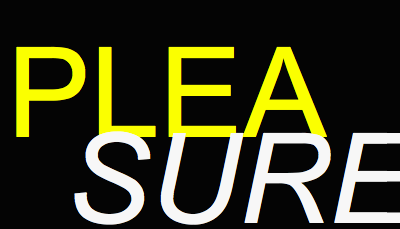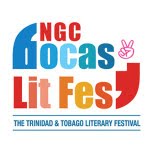Jasmine Thomas-Girvan's Gardening in the Tropics
Sculpture
How to describe it? The extraordinary work of Jasmine Thomas-Girvan, who twists pieces of palm fronds into tongues of flame, who places a cage within a cage within a cage, whose human figures twist into tortured, glorious creatures: bodies illuminated by the mahogany that encases them?
I am referring, of course, to Thomas-Girvan's most recent show held at the Y Art and Framing Gallery at Taylor Street, Port of Spain. The show took its title from Olive Senior's now classic collection of poetry and fused poetry with sculpture to create meditations that, for me, were profound and deeply affecting. This was work commenting on society: Caribbean and beyond (Thomas-Girvan was born in Jamaica but lives in Trinidad).
Consider 'Seeing Red', a lacquered box painted post-box red (of is it blood red?) with a figure sitting with legs split atop it, fingers to its ears. Not hearing, but red all around. The piece is about not being open to what is around us. Unlike the figures in 'The Message' who, in the course of one conversation are confronted, literally, by an iron fist with a message of its own. The intrusion of violence. A violent intrusion. A moment of power. A power reversal.
The stand-out, however, for me was 'The Illuminated Heart', a hybrid between a sculpture and a pendant: an illustration of how art can literally be wearable. A bronze pendant (a heart with a head atop it in ecstasy/pain/worship/song) is detached from a mahogany body. The idea of detachment revealing something more vulnerable beneath. The feeling of isolation. The suggestion of a fetal kind of vulnerability. The simultaneous suggestion of strength; of a solid core. All from this piece, which you can see in the catalogue for the show.
Other highlights included 'Flame', a simple sculptural construction made of palm frond material and brass and inspired by Orwell's line: "and I was alive it's a feeling inside you a kind of peaceful feeling and yet it's like a flame." Another was 'Finding your Soul', which offers a glimpse of freedom by placing its subjects behind bars. There is politics in all of this: both in a limited and wider sense of negotiating a place amid oppressive forces. But the key note is a sense of hope, and, in my estimation, love.
SEE the catalogue here. READ more here.
Sculpture
Photo by Michelle Jorsling, courtesy y art gallery.
How to describe it? The extraordinary work of Jasmine Thomas-Girvan, who twists pieces of palm fronds into tongues of flame, who places a cage within a cage within a cage, whose human figures twist into tortured, glorious creatures: bodies illuminated by the mahogany that encases them?
I am referring, of course, to Thomas-Girvan's most recent show held at the Y Art and Framing Gallery at Taylor Street, Port of Spain. The show took its title from Olive Senior's now classic collection of poetry and fused poetry with sculpture to create meditations that, for me, were profound and deeply affecting. This was work commenting on society: Caribbean and beyond (Thomas-Girvan was born in Jamaica but lives in Trinidad).
Consider 'Seeing Red', a lacquered box painted post-box red (of is it blood red?) with a figure sitting with legs split atop it, fingers to its ears. Not hearing, but red all around. The piece is about not being open to what is around us. Unlike the figures in 'The Message' who, in the course of one conversation are confronted, literally, by an iron fist with a message of its own. The intrusion of violence. A violent intrusion. A moment of power. A power reversal.
The stand-out, however, for me was 'The Illuminated Heart', a hybrid between a sculpture and a pendant: an illustration of how art can literally be wearable. A bronze pendant (a heart with a head atop it in ecstasy/pain/worship/song) is detached from a mahogany body. The idea of detachment revealing something more vulnerable beneath. The feeling of isolation. The suggestion of a fetal kind of vulnerability. The simultaneous suggestion of strength; of a solid core. All from this piece, which you can see in the catalogue for the show.
The Tower of Victory - mahogany and bronze, height 15". Photo courtesy Y Art Gallery.
Other highlights included 'Flame', a simple sculptural construction made of palm frond material and brass and inspired by Orwell's line: "and I was alive it's a feeling inside you a kind of peaceful feeling and yet it's like a flame." Another was 'Finding your Soul', which offers a glimpse of freedom by placing its subjects behind bars. There is politics in all of this: both in a limited and wider sense of negotiating a place amid oppressive forces. But the key note is a sense of hope, and, in my estimation, love.
SEE the catalogue here. READ more here.


























































